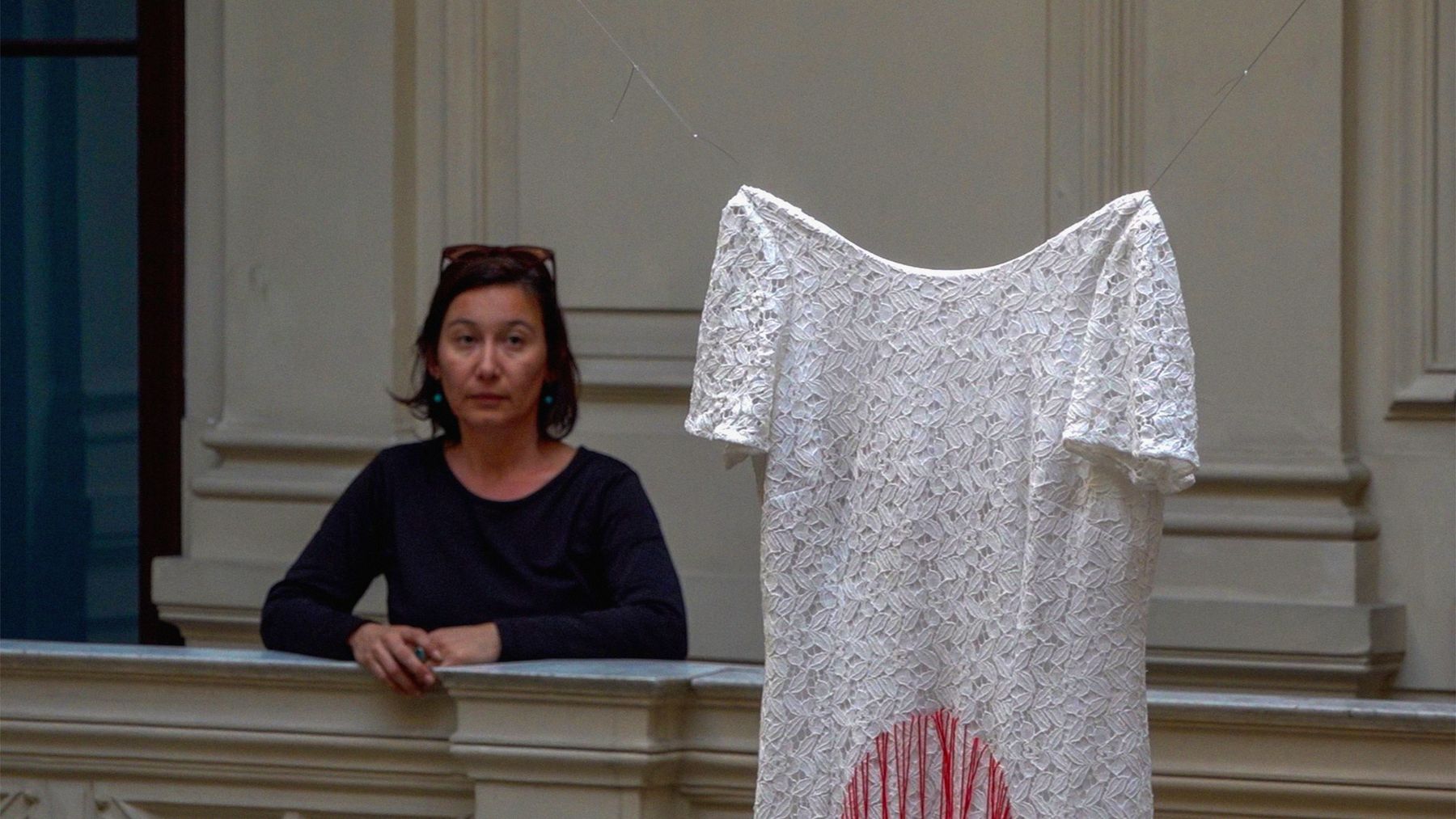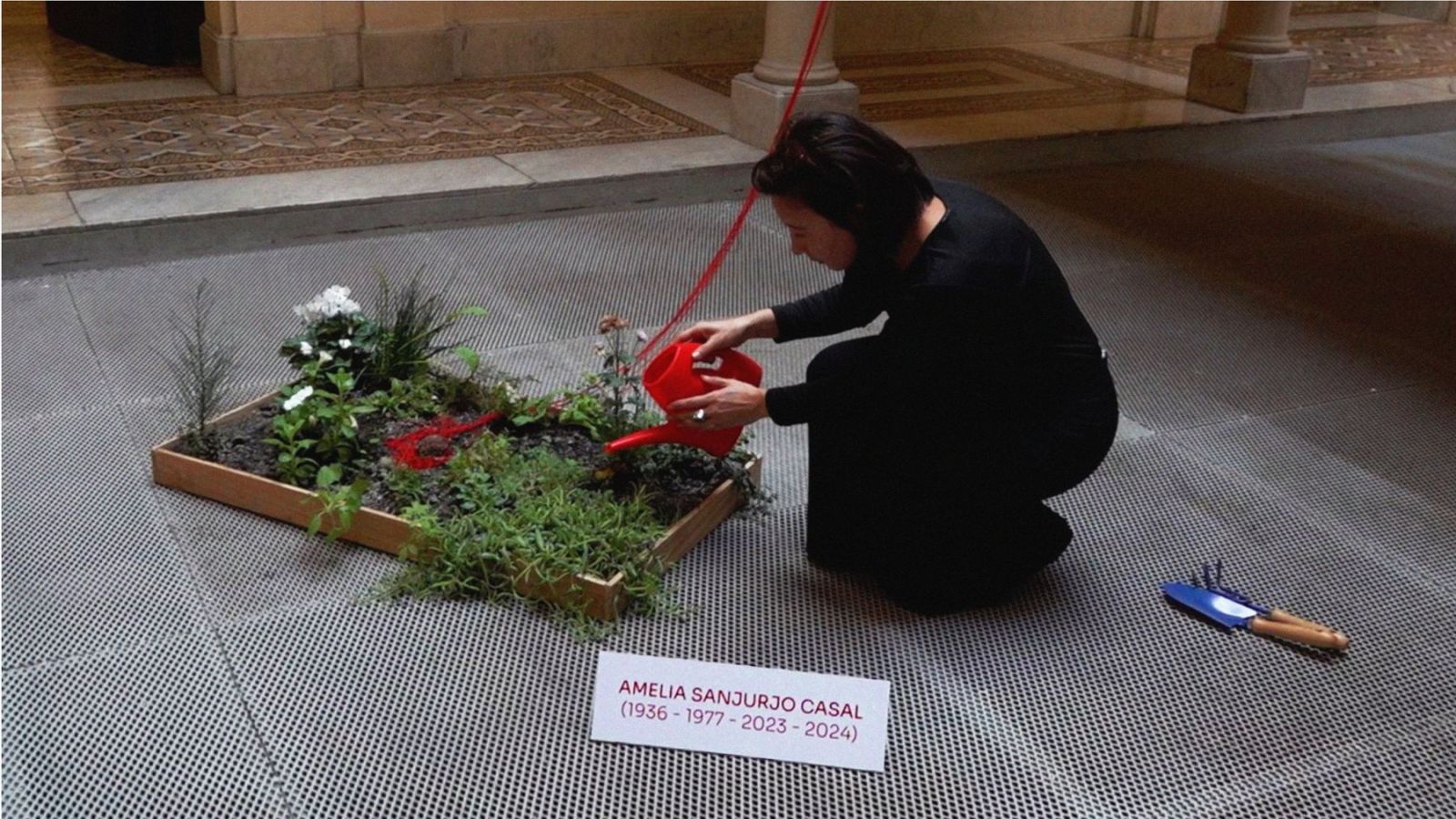
- Manuela Aldabe is a Uruguayan artist, journalist and professor who has been investigating unjust deaths with her artistic practice for years. She began working in 2016 on the dressing room of women victims of femicide and, among other things, worked with the wedding dress of the Uruguayan poet Delmira Agustini, killed by her husband. In it we are all the artistic installation that has opened in the Museum of Indigenous Art of Precolombino (Montevideo, Uruguay).

The Uruguayan forensic anthropology team dedicates the work Aldabe has just presented to the body found in the Fourteenth Infantry Battalion. The body was destroyed during the dictatorship. In order to collectively pay tribute from art, the issue of the disappeared has been reached. “These are deaths that have drifted in our territory and in our history and the search to give them visibility and their own space encourages me to do this work,” he says when he asks about the reason for the project.
He has used the land of four graves of the Nineteenth Battalion to build a garden that destroys it and pays tribute to the memory of the buried. In his opinion, in these 40 years the remains have been transformed into land, compost, fed the land and from there new flowers have been born. On the process it says: “Every burial, every human being has been very singular; some had compact earth, others had lime. The land of the tomb of Julio Castro (1908-1977-2011) is, for example, sand. Julio Castro was a journalist and teacher. Working with the land of his grave has echoed me many times since I too am a journalist and a professor. Eduardo Bleier (1927-1976-2019) was a friend of my grandfather and, in that case, he has touched my heart from tenderness. Ricardo Blanco (1938-1978-2012) was a trade unionist and it was the admiration for him that made me move. Finally, the unidentified body depicting this dress has shaken me completely, for being a woman and for being pregnant when she was murdered.”
.jpg)
Although it has sought to link the state terrorism of the Uruguayan dictatorship with the current situation, the project has been woven according to the personal stories of each of the disappeared. There are 196 (at least) people who disappeared from the Uruguayan military dictatorship and wanted to talk about the identity of each of them and their contributions. Although the work has tried to move away from being a history of terror, the tragedy of the crimes against humanity committed by the military dictatorship has had the need to denounce them and make them present.
By the place and date of the presentation,
the work has not been unexpectedly placed at the Museum of Indigenous Art of Pre-Columbian Montevideo. The headquarters of the Ministry of Defence was there during the dictatorship, between 1973 and 1985, and dozens of Uruguayans were questioned and exhumated there. The fact that the memory of the disappeared has been transferred to this museum, its presence in it, has been a very significant artistic gesture, at the same time as a demand for justice.
Nor is it by chance that the date on which he presented the work. The national mobilization, organized annually by the collective Mothers and Relatives of Uruguayans Missing Detainees (Mother and family members of detainees and missing persons), has revolved around the historic Silent March. The massive demonstration calls for clarification of the disappearances and murders that occurred during the dictatorships that they promoted in the context of the Condor Plan in Uruguay and South America. Under the motto We demand answers (They know where they are. We want answers).

Identification In
parallel with the mural “Amelia Sanjurjo 1936-1977-2024”, among the multitude that has gathered at the University of the Republic of Montevideo, the tribute and public funeral that today organized the association Mothers and Relatives of Uruguayans Missing Detainees, has brought me to this poster.
Three dates of the cartel draw my attention: the first issue is the year of the birth of Amelia Sanjurjo; the second year that was killed by the dictatorship's military for belonging to the Communist Party of Uruguay; and the third that returned to the people. This is what Uruguayan society has felt when it identified Amelia's body.
Amelia Sanjurjo Casal is among the graves he found in the Fourteenth Infantry Battalion. Two weeks since Manuela Aldabe revealed the work that demanded the identification of the body and the March of Silence. In it we are all transformed by the evolution of history and by the committed will of the militants who claim memory and justice. The dress now has the sign of “Amelia Sanjurjo 1936-1977-2024”.
"Those who buried him didn't say where he was or who he was. I've worked with a body that didn't have a name, and during the exhibition, by getting the scientists working on the subject to know who it is and when it comes to making their identity public, maybe there's a psychometric action that allows us to continue to believe that it's possible to transform the world. I think that's fundamental to art. We have boundaries in every area we live in, not in art. Art, when it has behind a political movement that gives it muscle, everything is possible,” he explained.
And now what?
Aldabe hopes that people will come to the exhibition with a list of the names and surnames of those disappeared by the Uruguayan dictatorship to be part of the historical account of Uruguay. Likewise, it intends that the strands of the “blood” of the work of art bear a sense of hope that is born with those strands, which ends with a dress that flies and is surrounded by flowers, in this exercise of memory and presence. On the other hand, knowing the identity of the corpse, he trusts to be able to initiate an investigation that clarifies what happened and does justice to Amelia.
Asked about the following steps, Aldabe says: “Now, surely, I will work with Amelia, because in this play I didn’t know it was Amelia Sanjurjo. This will be, now yes, the artwork for Amelia. Your land will go to a small garden located in the Memory Park, the Museum of Memory of Montevideo, where there are other graves and where we will grow plants. Amelia returns home, to the family, to the people.”